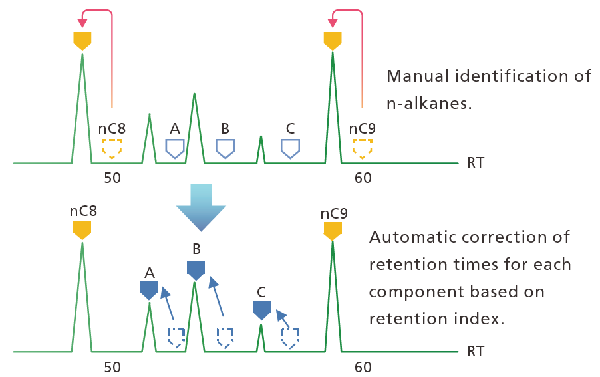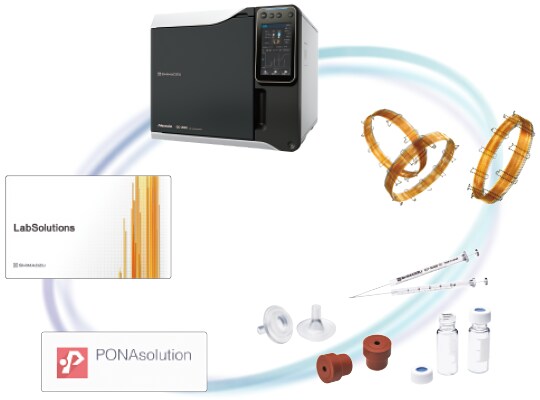PONAsolution
Software for PONA Analysis and Detailed Hydrocarbon Analysis

The PONAsolution is an analytical software for LabSolutions that effectively supports PONA/DHA analysis.
ASTM Standards: D5134, D6729, D6730, D6733.
What is PONA/DHA Analysis?
PONA/DHA analysis determines the individual chemical components in petroleum products and groups them into PONA types based on chemical structure. Understanding these compositions is essential for process control and quality management in refineries.
PONA: Paraffins, Olefins, Naphthenes, and Aromatics
DHA: Detailed Hydrocarbon Analysis
AOC, LabSolutions and PONAsolution are trademarks of Shimadzu Corporation or its affiliated companies in Japan and/or other countries.
Windows is either a registered trademark or a trademark of Microsoft Corporation in the United States and/or other countries.
Features
News / Events
-
Explore GC Systems for Official Standards
Each Shimadzu System GC Analyzer is meticulously built and rigorously tested to meet the specific analytical needs outlined by applicable industry standards, providing dependable performance for a wide range of applications.
-
Unlock New Possibilities with the Fully Loaded Brevis GC-2050: Expanded Inlets, New Detectors, Lower Costs
Explore how the Shimadzu GC Brevis GC-2050 can help your lab achieve significant cost savings and enhance efficiency.
-
PONAsolution has been released
The PONAsolution is an analytical software for LabSolutions that effectively supports PONA Analysis and Detailed Hydrocarbon Analysis.
-
User's Voice from Nanospace Catalysis Research Unit, Institute of Integrated Research (IIR), Institute of Science Tokyo
From the Development of Zeolite Catalysts to Achieving Carbon Neutrality using Gas Chromatography
-
The Gas Chromatograph Brevis GC-2050
The Gas Chromatograph Brevis GC-2050 has been fully updated -compact, powerful, and cost-efficient- crafted to elevate your productivity to unprecedented levels.
-
COA Search for SH Series GC Columns is now available
A Certificate of Analysis (COA) is a document that ensures the product meets the shipping requirements. COA Search for SH Series GC Columns has been released.





